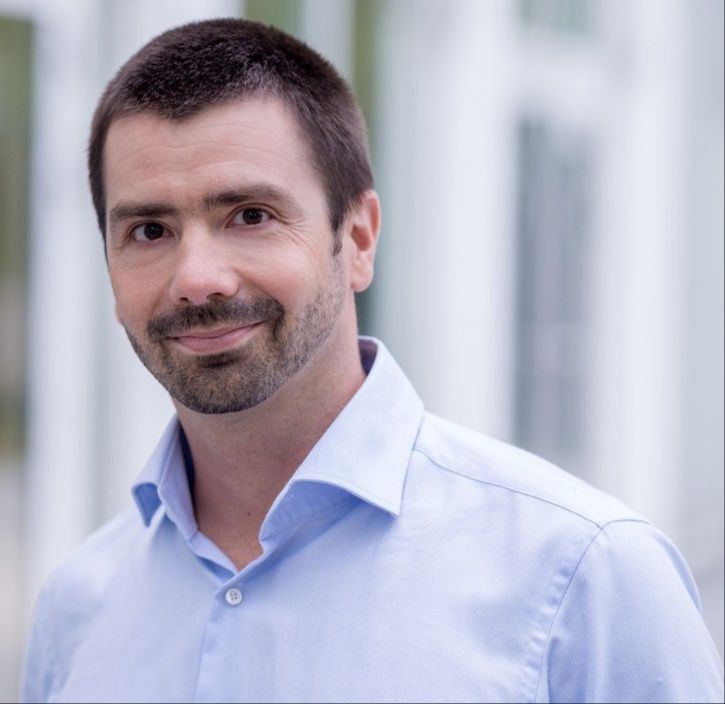22/03/2017
Print PagePortrait: Philipp Greif - Tracking down cancer drivers

Philipp Greif comes from Munich and speaks with an unmistakable Bavarian accent. As human genetics specialist, he is based at Ludwig-Maximilians Universität (LMU), where he studies the genetics underlying leukemia and examines patient samples for the key mutations that could be used as a starting point for diagnosis and treatment. “We start by studying small groups of around five to 50 patients in order to identify possible driver mutations. We are particularly interested in mutations that crop up repeatedly in certain groups of patients,” says Greif. “Then we check larger cohorts to see if they confirm our findings.” His working group then examines likely candidates in cell cultures and in mice to determine their precise function.
Targeting leukemia cells
Using this approach, Greif and his team have already identified a few promising candidates for new types of treatment. They include the N676K mutation in the gene of the growth factor receptor FLT3, which plays a key role in the development of acute myeloid leukemia (AML). As Greif’s team discovered, the N676K-mutated receptor not only stimulates the growth of the leukemia cells, but it is also responsible for the development of resistance to certain active pharmaceutical ingredients.
Last year, the team published findings about another previously unknown mutation that promotes the growth of leukemia cells: the mutation in the ZBTB7A gene stimulates cell metabolism and delivers the energy the cancer cells need to divide unchecked. “However, the mutation also makes the cells more susceptible to certain metabolism inhibitors, which we can use to target the leukemia cells,” explains Greif. “We plan to use these findings to develop a new combination therapy.”
Combining research and patient care
Greif is one of just a few physicians in Germany to occupy a post that combines clinically oriented research and patient care. “I am currently in the hospital 20 per cent of the time, so I can concentrate primarily on my research within the DKTK consortium. Things are much better for me than for some of my research colleagues, who have to schedule their laboratory experiments for the evening.” Greif decided that he wanted to be a research physician while he was doing his doctoral research in epigenetics – a relatively recent field of research that looks at how DNA packaging regulates gene expression. “Having the opportunity to focus intensively on a research question was something that fascinated me even then, and it still does.”
Working for the World Health Organization (WHO) in Geneva gave Greif a global view of cancer: “At the WHO you learn to see diseases in a global context. At the time, there were signs that cancer was on the rise worldwide, while many infectious diseases were receding,” recalls Greif. A postdoctoral research grant from the Carreras Foundation in 2005 gave him the opportunity to spend several years conducting research in the Clinical Cooperation Group for Leukemia at the Helmholtz Center München.
Leukemia cells need fewer mutations
Why did Greif decide to specialize in leukemia research? “Leukemia is a particularly interesting model for investigating cancer-driving mutations because it is less complex than solid tumors,” explains Greif. “The DNA of leukemia cells contains on average only around a tenth of the number of mutations that occur in solid tumors. Probably because the leukemia cells can spread quickly via the blood with just a few mutations, whereas solid tumors first have to break out of the tissue.”
The main motivation for his choice of research field, however, is the leukemia patients themselves: “Targeted therapies are not yet established in this area, particularly for acute myeloid leukemia (AML), and there are hardly any personalized treatment methods. This is where biomarkers can help physicians decide whether a patient stands a good chance of recovery with chemotherapy alone, or whether they should consider a risky stem cell transplant as well.”
Removing critical clones first
Separating the wheat from the chaff in cancer-related genetic mutations is still very complex, despite the rapid advances in technology. One of Greif’s main concerns is therefore ensuring a level-headed approach to genetic analyses when advising patients: “Sometimes it isn’t possible to tell whether you are looking at a cancer-driving mutation or a variation within the normal range. So when giving genetic advice we must always weigh up carefully whether providing the patient with the results of a genetic analysis will add to or relieve stress.”
Within the new Tumor Evolution Collaborative Research Centre (SFB 1243), Greif and other researchers are now conducting research to investigate the mutation profiles of patients. “Therapy is also a kind of positive genetic selection for resistant tumor cells,” Greif explains. “We find unfavorable disease progressions with early recurrence primarily in leukemia patients whose tumor cells do not display any new mutations during treatment and who may even lose some mutations. In these cases, the tumor cells that respond to treatment have been removed but this may allow the remaining cancer cells to spread even faster.”
The researchers have already identified a few new patterns in the development of certain tumor cell clones: “Looking back, we can now see which clones from the initial diagnosis have returned following chemotherapy,” says Greif, providing a glimpse into the unpublished findings. “In the future, we hope to gain a better understanding of the importance of competing tumor cell clones, so that we can identify particularly stubborn cancer cells during the initial diagnosis and target them immediately.”